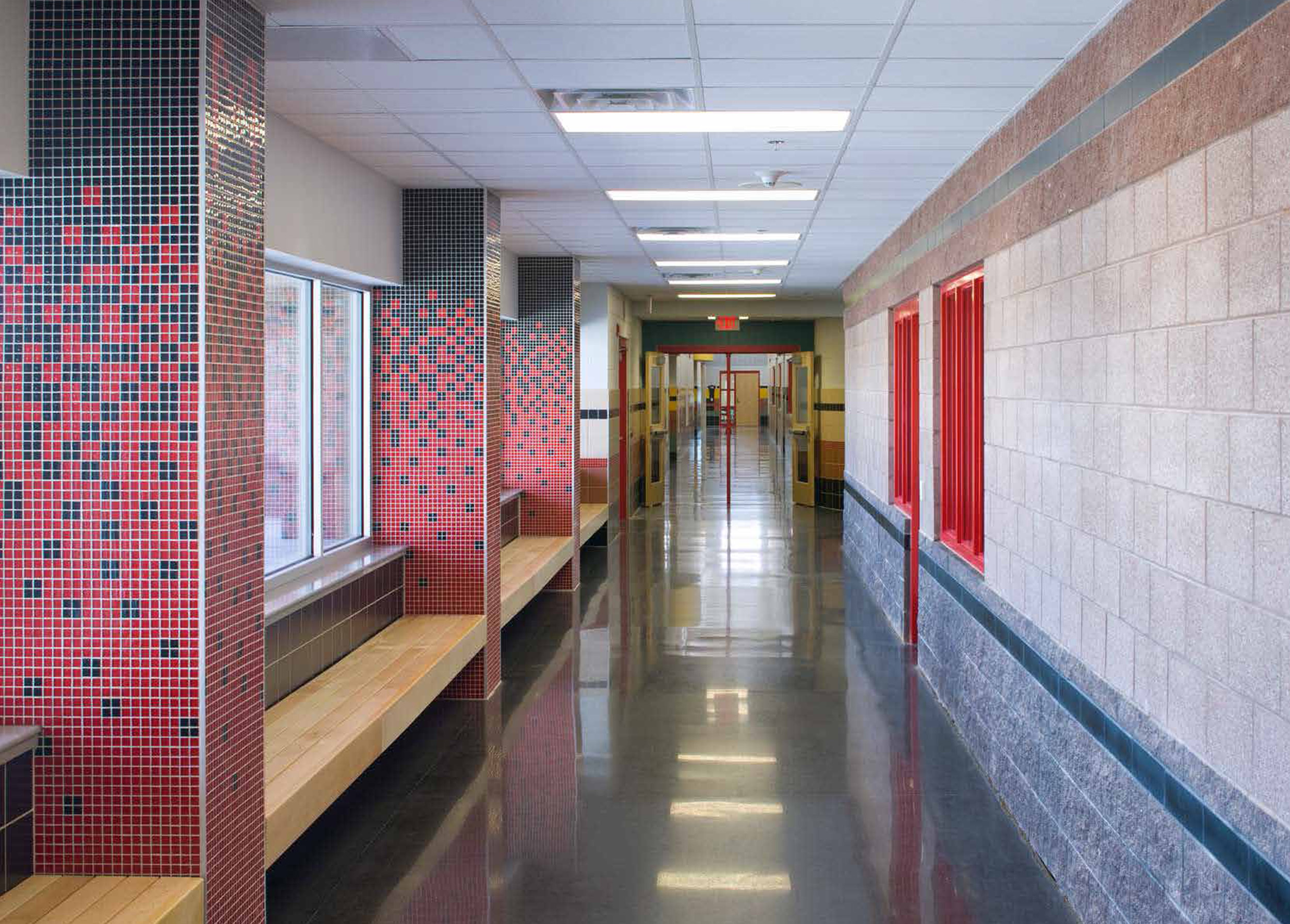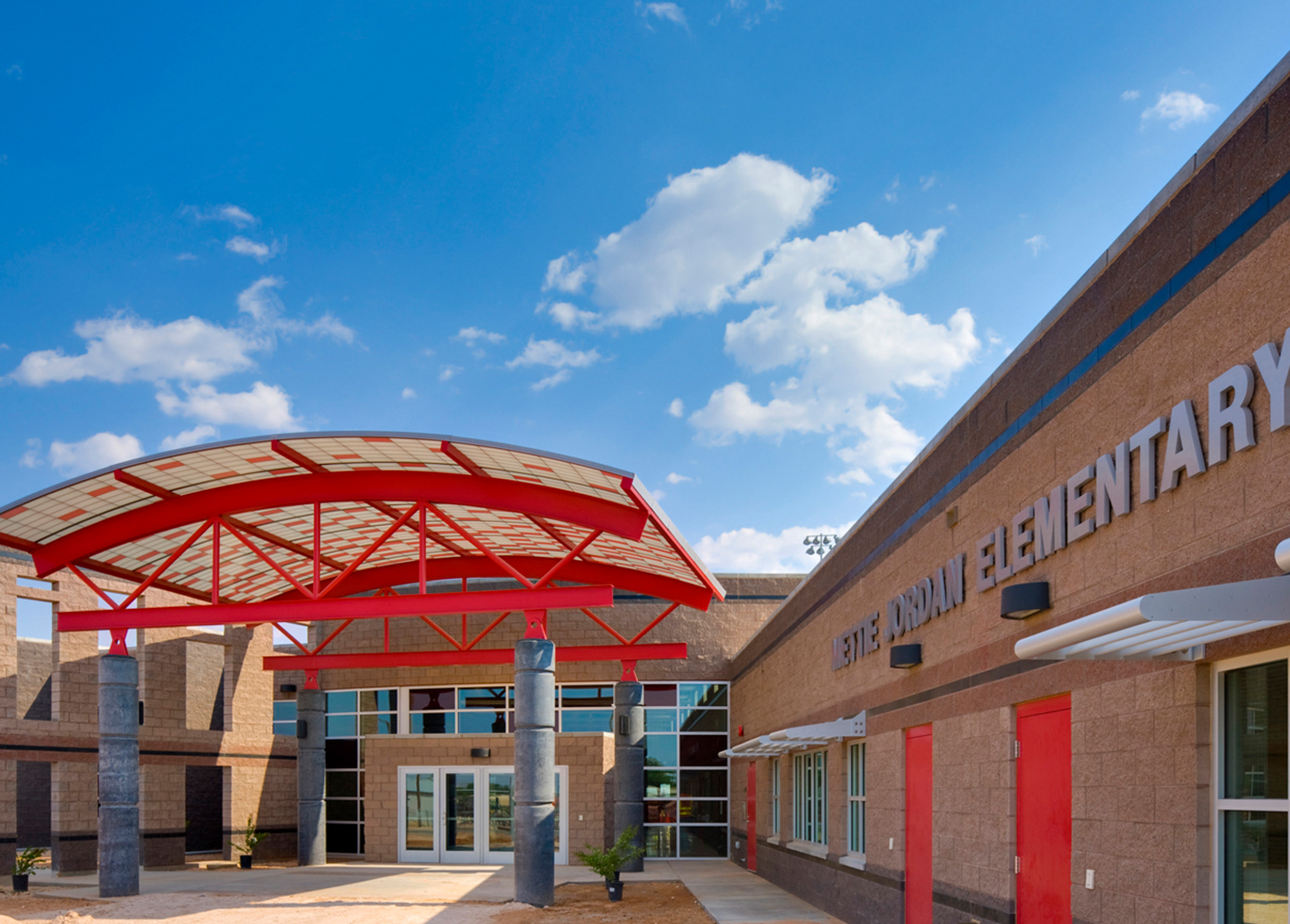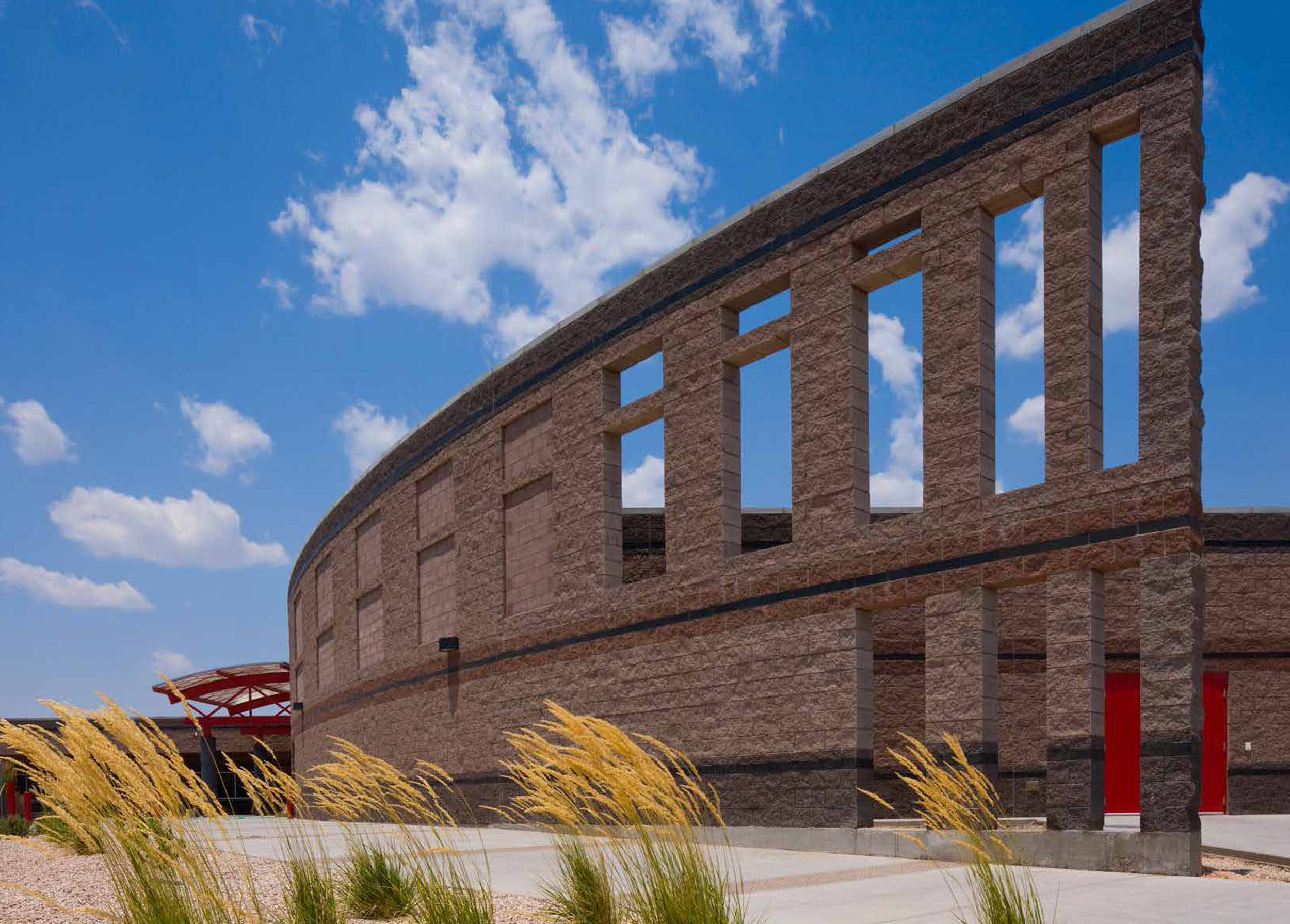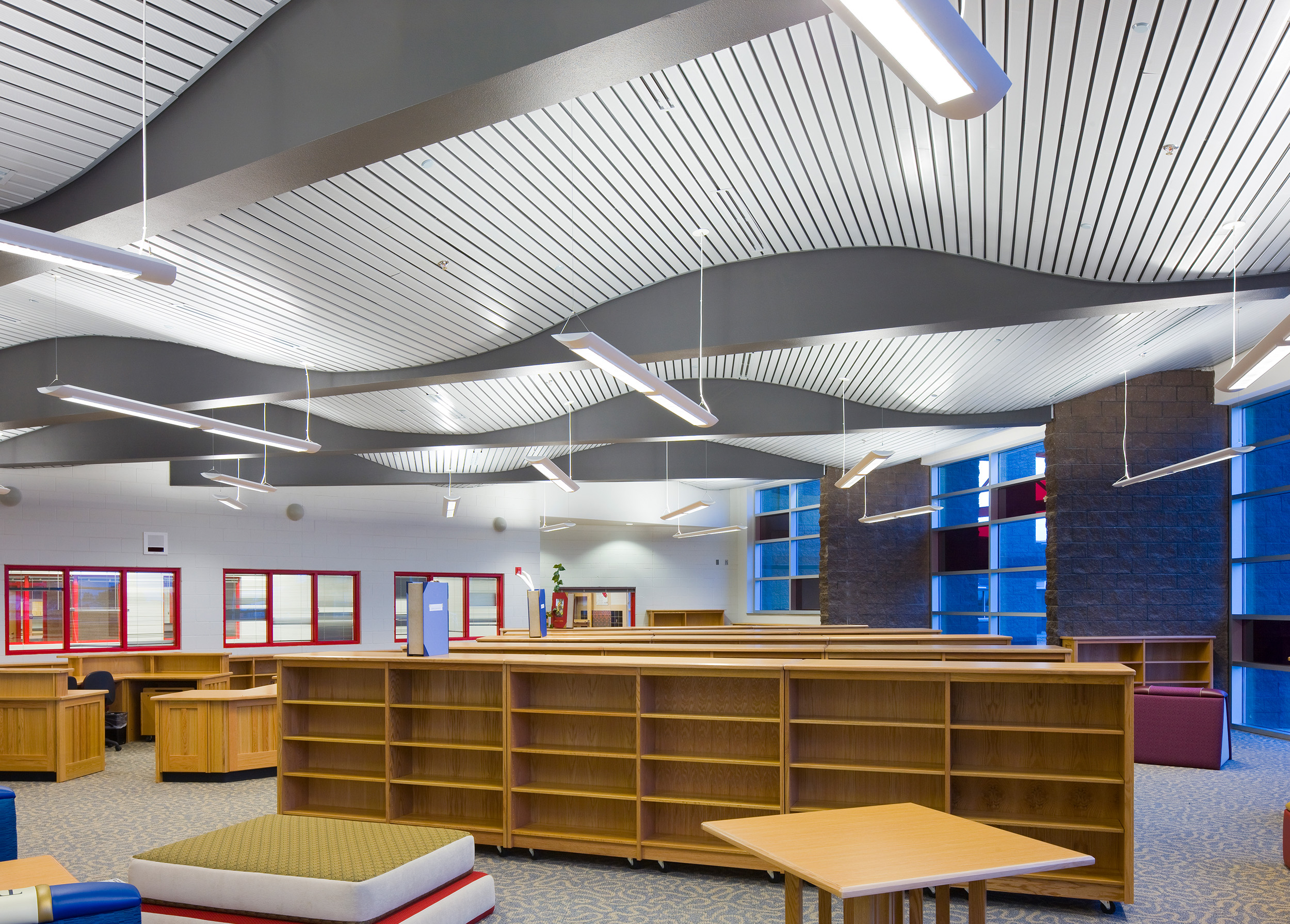Mettie Jordan Elementary School
Wilson & Company provided architectural and engineering services to replace a 50+-year-old school that had become costly to maintain and was not compliant. The new 81,000 SF Mettie Jordan Elementary School is an $18.6 million facility designed for 400 Pre-K to 5th grade students. The design draws from the community’s character by using the iconic imagery of pump jacks of the gas, oil, and alternative energy business that is the critical economic driver in the region. Entry canopies serve as gateways to the school and community; these and other architectural elements are abstract representations of the energy business to support the community spirit.
The new site unifies the campus and creates a pedestrian-friendly environment for students, staff, and community. The plan allows for future development of the middle school, district offices and community-shared athletic facilities.
Wilson & Company architects selected large sweeping exterior walls to soften edges and reinforce movement in and around the building. The design promotes interest and investigation for the community and students. The architectural style was established by using different materials to create recessed openings, scalable spaces, and a variety of colors.
The building’s orientation accommodates the campus experiences. The site was designed to accommodate separated bus student drop-off and parent-student drop-off locations while maintaining ease of access to both. The main entry is identifiable from the north edge of the property, and the shared cafeteria is more centrally located for all three schools to access.
Phasing was necessary because the new school was built on an existing site and included multiple phases, starting with the demolition of the existing cafeteria, tennis courts, and shop space. Due to the remote location of Eunice, phase planning and subcontractor coordination were critical to ensure the timely arrival of materials to follow the schedule of all phases.
The building was designed to exceed the code-adopted energy standards to produce lower operating costs over the life of the building. The money saved will go towards educational budgets supporting students.




